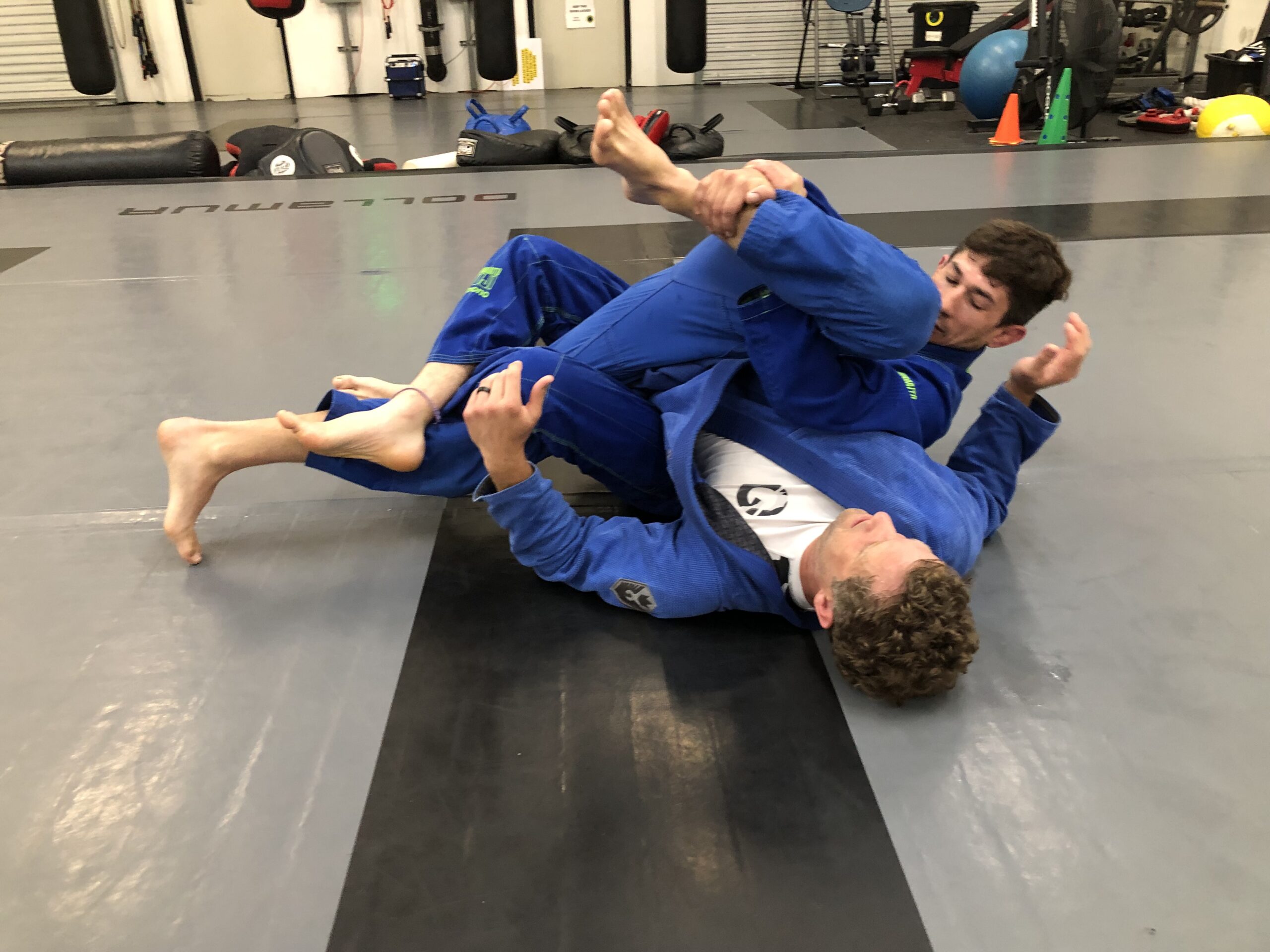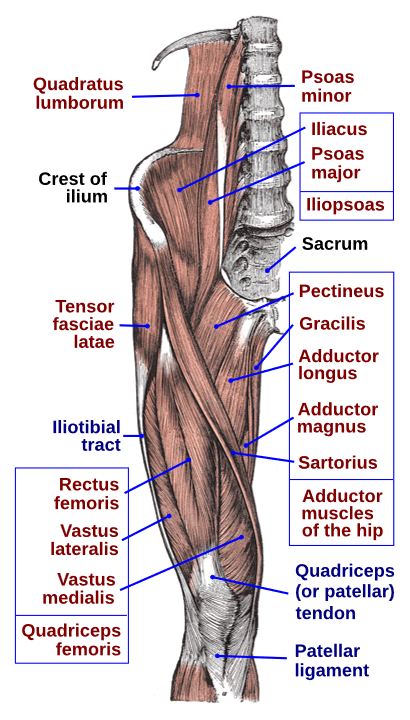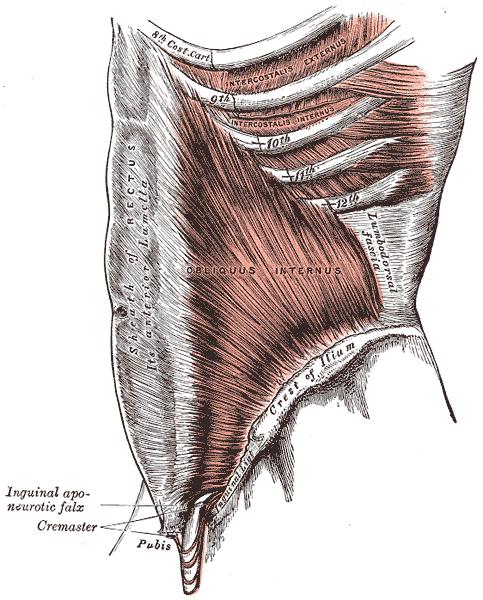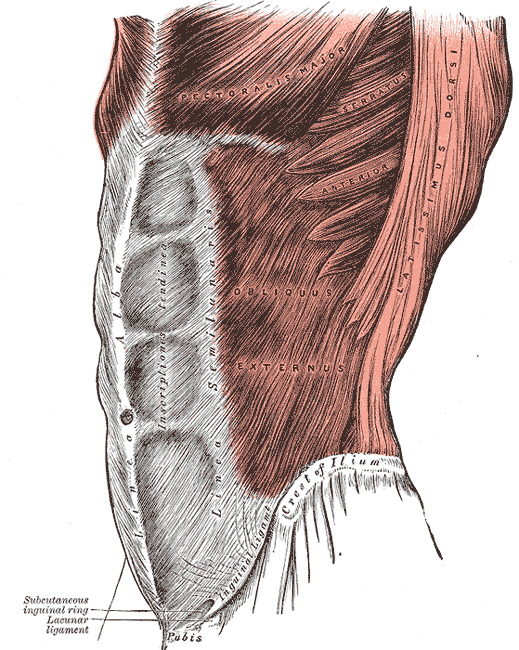This article will discuss the anatomy involved in a groin strain – this should also provide some insight into just how important hip movement is for everyone, not just athletes. This article will also discuss the various structures that can get injured and the symptoms after injury. We will also discuss the risk factors for getting this injury and its treatment.
- The groin largely consists of the bones, muscles, tendons, and ligaments connecting our abdomen to our legs.
- Injury to one or more of these structures results in a groin strain.
- Typically the best treatment is time and rest, and also the best way to prevent a repeat injury!
- If in doubt of the diagnosis, be sure to consult you doc for an exam.
Anatomy
To focus in on the bones of the groin you have the pelvis, which is the “meeting point of the body” and is a series of bones that connect our spine with our legs. The femur bones are the big bones of our thighs and connect to the pelvis at the hip joints. The hip joints are “ball in socket joints” that allow for significant range of motion in many directions and are stable.
The muscles of the groin are crucial to balance, stabilization, and maintaining body posture while upright. They are generally grouped by whether they bring a limb (in this case a leg) back towards the body (this movement is termed adduction) or away from the body (i.e. abduction). Therefore, the adductor muscles of the groin pull on the inside of the femur to bring the leg closer to the midline of the body. Tremendous force can be created with these muscles. It is impossible to stand on one leg or walk without engaging your groin muscles let alone work your guard in Brazilian jiu jitsu.
The many muscles of the groin span both from our pelvis to our femurs and from the spine to our femurs. The adductor longus muscle is the most common culprit when there is a groin strain, but the other muscles of the adductor muscle complex (adductor magnus and adductor brevis), the gracilis, obturator externus, sartorius, and pectineus muscles can all potentially be involved. Other muscles such as the abdominal muscles, rectus femoris, or the Iliopsoas (note: the tenderloin cut is cow iliopsoas muscle and a small portion of this cut makes up the filet mignon) can also contribute to groin pain.2
Another fun sidenote, if trying to adduct just one leg, a person will be strongest when the hip is straight. However, if trying to synergistically adduct both legs at the same time, the most strength can be generated when the hips are being flexed and the knees extended.
Prevention and Diagnosis
Injury occurs when the forces going through the muscle-tendon unit exceed the strength of that chain. This could be from a sudden trauma or from attritional wearing down of tissues over time. With a groin strain it is usually when a tendon gets pulled off the pelvis bone, but sometimes the tendon is what is torn or the muscle itself can tear. Symptoms of a groin injury include pain in the front of the pelvis and down the inner thigh. There can be swelling, warmth, and even bruising as the injured tissues bleed. There can also be muscle cramping. There will certainly be some weakness and pain with adduction and pain when abducting the hip.
An important point to remember however is groin pain itself can be due to other causes as well! Medical professionals should be consulted. These issues could still be within the Orthopedic realm like hip joint issues or nerve irritation from inside or outside of the spine. But there are non-orthopedic issues such as abdominal organ and urologic issues including hernias or urinary problems.5
Treatment
Steps to treatment of a groin strain:
- Make sure it’s not one of the many other things that can contribute to groin pain, talk with your doc or a specialist.
- Rest, but gentle motion is ok so long as it is not painful. In general, lightly stressing the muscle is ok (and likely unavoidable given how much they do for us).
- Start with gentle range of motion. If you can go through a range of motion without pain you can gradually increase the attempted range of motion. If you are having pain you need to dial it back.
- Once you have good range of motion you can start progression of strengthening, but if there is pain you may have to take a step back.
- Physical therapy is best if supervised with a specialist. Physical therapy can also help identify muscle imbalances, weakness, or range of motion limits that may contribute to the problem or cause a reinjury.
It is very rare that surgical treatment is necessary for groin strains. Sometimes complete ruptures of the adductor tendons can occur and surgery can be considered. That being said, many people, even high level athletes, can recover well without surgery. Another situation in which surgery can be considered is with chronic injuries – the injury just keeps happening or never gets better despite time and physical therapy. One can consider surgery to reduce pain. In this situation, the surgery involves an intentional cutting of the tendons (AKA adductor release), but again, this is definitely not the norm for most people.
Conclusion
References
- Lynch TS, Bedi A, Larson CM. Athletic Hip Injuries. J Am Acad Orthop Surg. Apr 2017;25(4):269-279. doi:10.5435/JAAOS-D-16-00171
- Serner A, Tol JL, Jomaah N, et al. Diagnosis of Acute Groin Injuries: A Prospective Study of 110 Athletes. Am J Sports Med. Aug 2015;43(8):1857-64. doi:10.1177/0363546515585123
- Orchard JW, Chaker Jomaa M, Orchard JJ, et al. Fifteen-week window for recurrent muscle strains in football: a prospective cohort of 3600 muscle strains over 23 years in professional Australian rules football. Br J Sports Med. Sep 2020;54(18):1103-1107. doi:10.1136/bjsports-2019-100755
- Whittaker JL, Small C, Maffey L, Emery CA. Risk factors for groin injury in sport: an updated systematic review. Br J Sports Med. Jun 2015;49(12):803-9. doi:10.1136/bjsports-2014-094287
- Suarez JC, Ely EE, Mutnal AB, et al. Comprehensive approach to the evaluation of groin pain. J Am Acad Orthop Surg. Sep 2013;21(9):558-70. doi:10.5435/JAAOS-21-09-558
- Figure 1 created by editor.
- Figure 2 Creative Commons at https://commons.wikimedia.org/wiki/File:Gray430-en.svg
- Figures 3 Creative Commons at https://commons.wikimedia.org/wiki/File:Gray395.png
- Figure 4 Creative Commons at https://commons.wikimedia.org/wiki/Category:Gray%27s_Anatomy_plates_of_muscles#/media/File:Gray392.png
- Figure 5 used by permission from Fujisaki K, Akasaka K, Otsudo T, Hattori H, Hasebe Y, Hall T. Risk Factors for Groin Pain in Male High School Soccer Players Undergoing an Injury Prevention Program: A Cluster Randomized Controlled Trial. Trauma Care. 2022; 2(2):238-250. https://doi.org/10.3390/traumacare2020020








Recent Comments